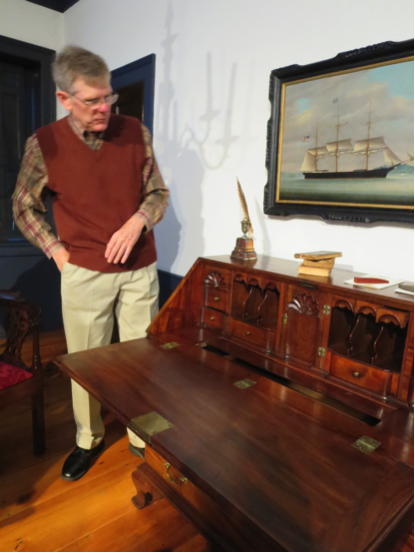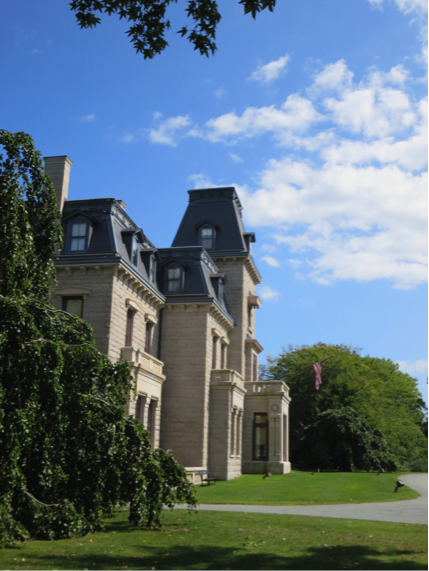Day Four: Newport, Rhode Island
After a day of record-breaking rainfall, we were thrilled to wake up to the city of Providence bathed in sunlight. The perfect weather was ideally timed for our exploration of Newport, Rhode Island. Newport’s thriving 18th century merchant population helped support a community of craftsmen whose creations, especially furniture, remain masterpieces of American material culture. During the 19th century, southern planters seeking a retreat from the harsh summer climate frequented the island. Newport is perhaps best known for the sprawling turn of the century mansions built by leading industrialists of the era. With six houses on our agenda, we were set to explore the full range of Newport’s heritage.
Our tour began with the ca 1748 Hunter House, the earliest property managed by the Preservation Society of Newport County. We were treated to an in depth tour of the architecture and furnishings by chief conservator Jeff Moore and curator Cait Emery (WPAMC 2009). The house has been recently reinterpreted by alum Caryne Eskridge (WPAMC 2012), whose hard work was visible in the new labels and an excellent didactic display of a John Townsend pembroke table. The furnishings as a whole were assembled for the 1953 exhibition on the Arts and Crafts of Newport Rhode Island and include examples by the Townsend and Goddard cabinetmaking families.
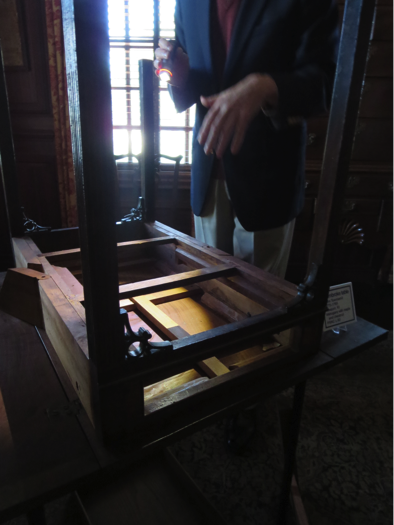 Turning the tables (upside down): an excellent didactic display executed by Caryne Eskridge during her year-long fellowship with the Preservation Society of Newport County.
Turning the tables (upside down): an excellent didactic display executed by Caryne Eskridge during her year-long fellowship with the Preservation Society of Newport County.
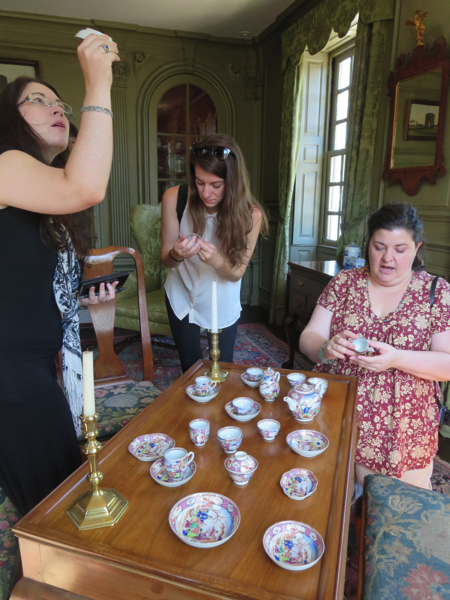 Elisabeth Malin, Emily Rebmann and Tiernan Alexander examine Chinese export porcelain
Elisabeth Malin, Emily Rebmann and Tiernan Alexander examine Chinese export porcelain
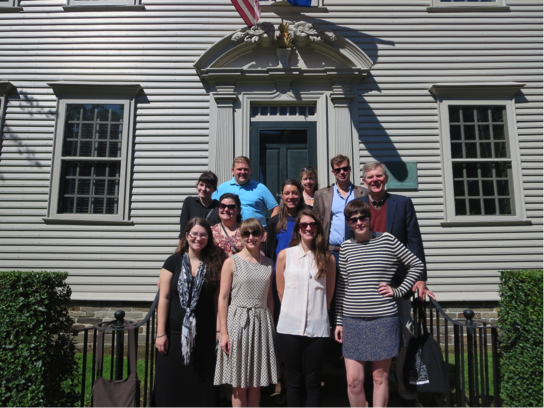 The group outside of Hunter House
The group outside of Hunter House
The next stop was Whitehorne House, a federal-style structure built in 1811, but substantially modified by later generations. The real star of the property was the Doris Duke collection of 18th century Newport furniture. Again we were treated to an in-depth discussion of work by the Townsend and Goddard schools, including the desk made by John Townsend for his personal use.
 Brock Jobe embraces a beloved 1760s side chair, one made and used by John Townsend of Newport
Brock Jobe embraces a beloved 1760s side chair, one made and used by John Townsend of Newport
We dashed further into the 19th century with our tour of the 1841 gothic revival home, Kingscote. The home was constructed for George Noble Jones, a Georgia planter. Wealthy southerners used Newport as an escape from the oppressive heat and disease of summer in their own region. Cait Emery, who wrote her Winterthur thesis on the Kingscote dining room, led the tour.
 The gothic revival exterior of Kingscote
The gothic revival exterior of Kingscote
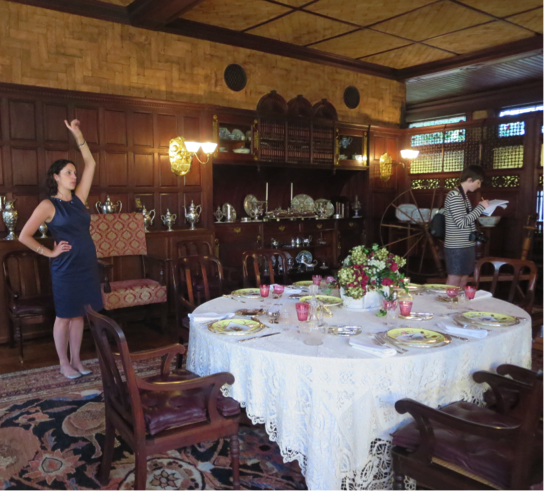 Cait Emery points to the creative use of cork by architects McKim, Mead and White in the ca 1879 dining room of Kingscote
Cait Emery points to the creative use of cork by architects McKim, Mead and White in the ca 1879 dining room of Kingscote
We enjoyed lunch on the expansive porch of the ca 1883 Isaac Bell house, designed by McKim, Mead and White, which is considered one of the best examples of shingle style architecture in America.
 The Isaac Bell House, 1883, McKim, Mead & White
The Isaac Bell House, 1883, McKim, Mead & White
The Preservation Society opened the home to the public in 1996. They chose to leave the property unfurnished, a decision that highlights interior details that include everything from stenciled patterns to wallpaper, sliding doors, repurposed French furniture panels and paint spattered ceilings.
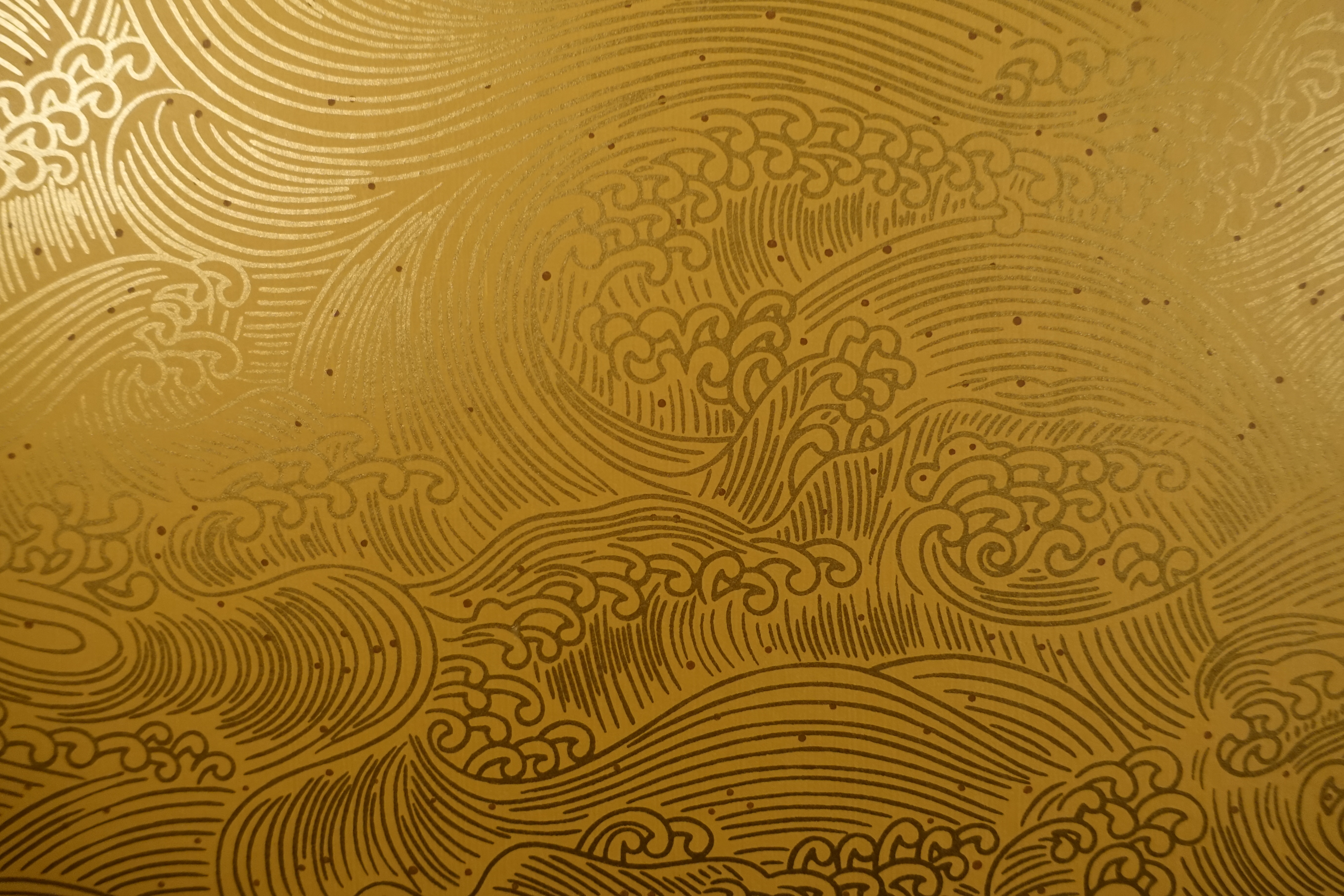 A detail of wallpaper on the second floor, which was recreated after a sample recovered during restoration
A detail of wallpaper on the second floor, which was recreated after a sample recovered during restoration
Jeff Moore and his team from the Preservation Society have uncovered graphite inscriptions of color names and wall treatments left by the workmen who added these details in the late 19th century. Each restoration was painstakingly done with respect to the evolving nature of conservation practices and the potential for future generations to more accurately determine the materials and appearances of the interiors.
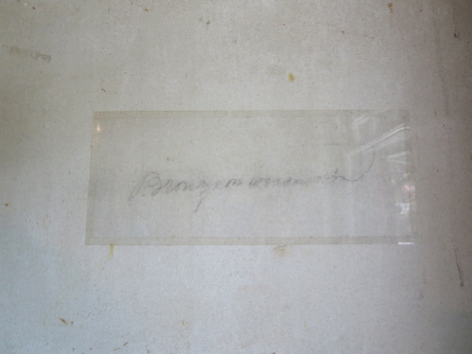 Example of the graphite inscriptions uncovered by the Preservation Society on the walls of the Isaac Bell House
Example of the graphite inscriptions uncovered by the Preservation Society on the walls of the Isaac Bell House
Our next stop was the Chateau-Sur-Mer, a complex structure created through numerous building campaigns across the second half of the 19th century. It is best known for the renovations and additions designed by Richard Morris Hunt from 1869-1890. Paul Miller of the Preservation Society served as our guide. Of interest were interior carvings by the Italian designer Luigi Frullini, whose Florentine workshop produced some of the finest carving of the period.
 Frullini designed dining room with elaborate carved elements
Frullini designed dining room with elaborate carved elements
 Detail of carving in the dining room
Detail of carving in the dining room
Last, but certainly not least, our Newport day took us to Marble House (1889-1892), home of Alva Vanderbilt. The interiors practically dripped with gold leaf, painted ceilings and Baccarat crystal. A marble bust of Louis XIV presided over the grand staircase, making it clear whose opulence inspired Vanderbilt’s taste.
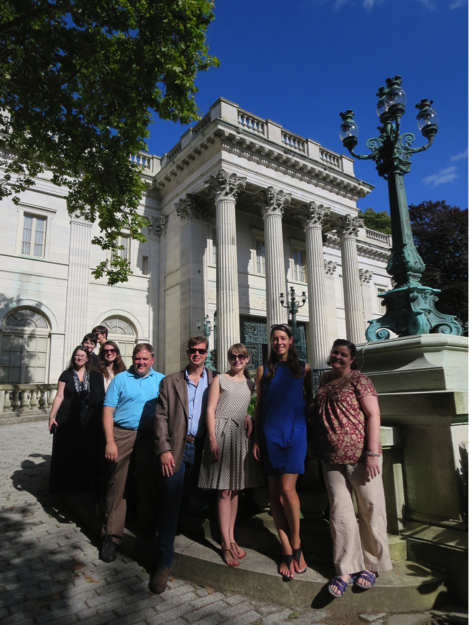 Outside of Marble House, which was inspired by the Petit Trianon at Versailles
Outside of Marble House, which was inspired by the Petit Trianon at Versailles
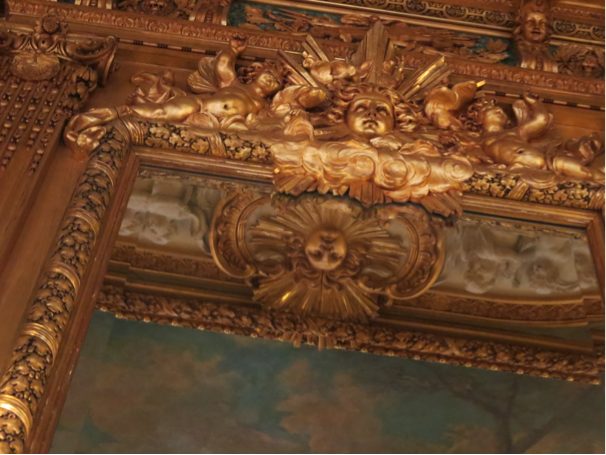 An example of the extensive gilding of the interior. In many cases, three colors of gold (green, yellow and red) were used to create subtle detail
An example of the extensive gilding of the interior. In many cases, three colors of gold (green, yellow and red) were used to create subtle detail
In her later years, Alva Vanderbilt began to turn away from her glamorous lifestyle and embraced the mantle of a suffragette. Pieces of “Votes for Women” ceramics dotted the cabinets in the service areas.
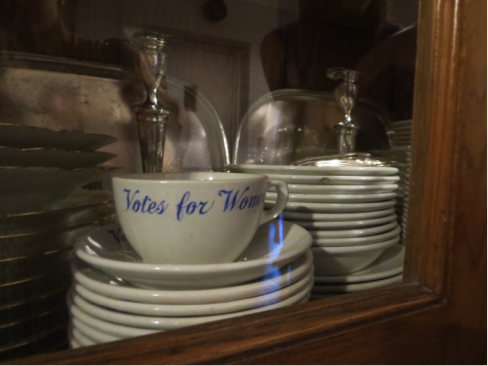 The “Votes for Women” ceramics from Alva’s suffragette efforts
The “Votes for Women” ceramics from Alva’s suffragette efforts
The beauty of Newport, and its lure for generations of Southern planters, wealthy New Yorkers and early merchants, was as clear as the beautiful day we had enjoyed on the island.
 The class rests their feet after a long, but wonderful, day
The class rests their feet after a long, but wonderful, day
Lea Lane, Winterthur Program in American Material Culture, Class of 2015

